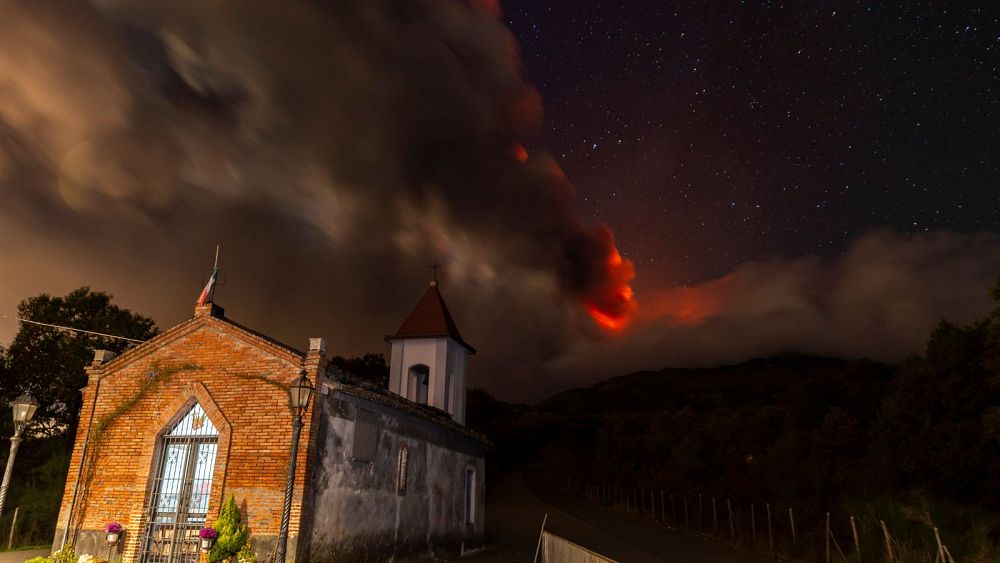Here’s what you need to know about Etna, Europe’s most active volcano, and how it impacts travel and tourism.
Etna lit up the skies of Sicily last night (November 12) after a quiet few months.
One of the most active volcanoes in the world, Etna’s spectacular displays rarely stay out of the headlines for long.
In August, Catania Airport it was forced to temporarily close and traffic restrictions were introduced following an eruption that scattered ash over the surrounding area.
But there is no sign that international travel to the Italian island has been halted on this occasion, despite impressive photos of billowing smoke and bright red lava.
In the meantime Iceland declared a state of emergency over fears of an imminent volcano eruption, which could cancel flights.
If you’re thinking of booking a holiday in Catania and eastern Sicily, you may be concerned that volcanic activity may disrupt your trip.
Here’s everything you need to know about how often Etna erupts and how it affects travel and tourism.
Contenuti
ToggleHow often does Etna erupt?
Etna it is one of the most active volcanoes in Europe and has been in a state of almost constant activity for the last decade.
There can be eruptions several times in a year and even in a month. The current eruption period began in 2013, according to the Smithsonian Global Volcanism Program.
In 2021, Etna emitted so much volcanic material in a sixth month that it rose almost 30 meters in height.
There have already been multiple eruptions this year. Websites like Discovery of the volcano follow Etna’s activity in detail and you can watch a live stream of the volcano on Etna Observatory place.
In most cases, Etna explosions are classified as low-level volcanic activity. This includes ash plumes, lava Strombolian fountains and explosions: slight explosions of magma that are nevertheless dramatic to observe.
According to the National Institute of Geophysics and Volcanology, the estimated height of last night’s eruptive column is approximately 4500 meters above sea level.
Is Etna safe to visit?
Etna is considered a safe place volcano – most eruptions do not endanger those who visit or live in the area.
Often the biggest inconvenience is the ash that covers the surrounding towns during eruptions. This also forces Catania airport to close occasionally as happened earlier this week and in May this year.
The volcano is under strict surveillance. The National Institute of Geophysics and Volcanology in Catania has a system of cameras, sensors, computers and human controls on site that record and communicate earthquakes in real time.
However, sometimes the volcano posed a threat. In 1928 the entire municipality of Mascali was razed to the ground. In the 1990s a lava surge threatened the town of Zafferana Etnea and had to be removed by digging channels.
More recently, in 2002, lava vapors destroyed shops, hotels and restaurants in the Piano Provenzana area.
Furthermore, Etna should not be underestimated by visitors hoping to scale its slopes.
The excursion company Go Etna advises visitors to always go accompanied by a guide or a local agency: if you want to exceed the threshold of 2,900 meters it is mandatory to hire a guide.
They also advise you to notify your hotel or B&B of your route and, if you ski, not to go off-piste.
Can you visit Etna during an eruption?
Since volcanic activity is generally at a low level, you can visit the volcano even during an eruption.
There are many hiking routes that stay well away from the summit and the craters where the explosions occur.
Visiting during an eruption is an exciting experience and some guides organize night tours especially to admire the fiery light show.
Image:Getty Images







